Make a base
 Photos via CakeSpy unless otherwise noted
Making just about any skin tone is easy if you start from a “base” mixture. This post details a basic way to make a base mix using the primary colors plus white. If you start with this base, all you need to do is refine the tone to match the skin tone you’re going for. You might even consider making a large batch of this “base” and storing it an airtight container so that you can have a skin tone base on command as you paint.
Photos via CakeSpy unless otherwise noted
Making just about any skin tone is easy if you start from a “base” mixture. This post details a basic way to make a base mix using the primary colors plus white. If you start with this base, all you need to do is refine the tone to match the skin tone you’re going for. You might even consider making a large batch of this “base” and storing it an airtight container so that you can have a skin tone base on command as you paint.
Skin is not just one tone
 Acrylic portrait via Craftsy member Chrissie.0
Cartoon characters often have simplified, flat skin tones. However, when you look at the realistic portrait above, there are a whole lot more tones going on in their face than one flat color. From the redness around the cheeks to a touch of bluish-purple tone under the eyelids, the whole spectrum can be found in the face. So keep your palette wide open so that you can mix all of the variety of colors that can be found in a given face.
Acrylic portrait via Craftsy member Chrissie.0
Cartoon characters often have simplified, flat skin tones. However, when you look at the realistic portrait above, there are a whole lot more tones going on in their face than one flat color. From the redness around the cheeks to a touch of bluish-purple tone under the eyelids, the whole spectrum can be found in the face. So keep your palette wide open so that you can mix all of the variety of colors that can be found in a given face.
Remember to use blue and green
 Acrylic self-portrait via Craftsy member Barry1953
We don’t think about blue and green in skin tones, but they are certainly there. This stylized portrait is a great example of how cool tones add contrast and dimension when paired with the warmer tones which we generally associate with skin tones.
Acrylic self-portrait via Craftsy member Barry1953
We don’t think about blue and green in skin tones, but they are certainly there. This stylized portrait is a great example of how cool tones add contrast and dimension when paired with the warmer tones which we generally associate with skin tones.
Be sparing with black paint
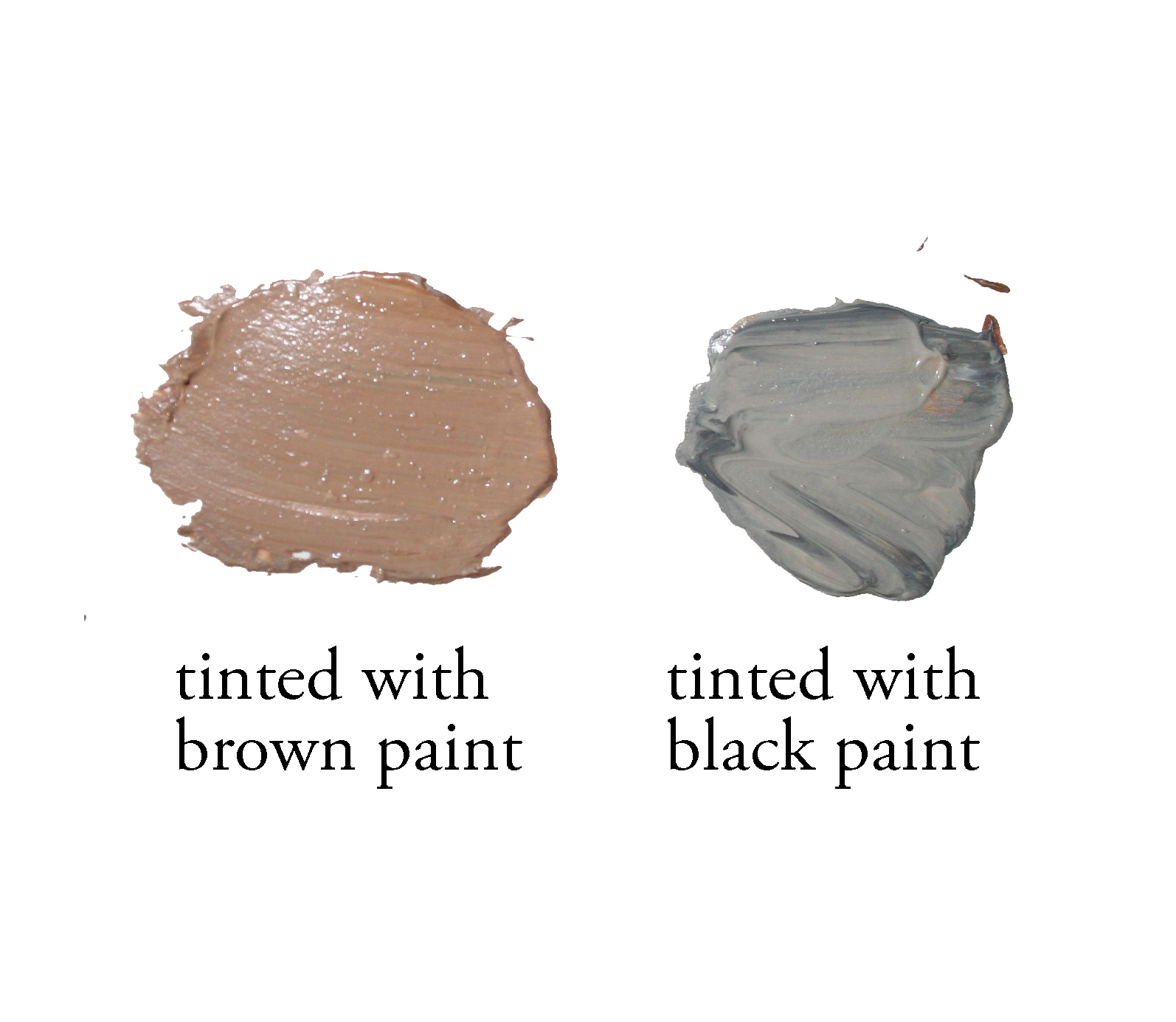 While white paint adds a wonderful pigment and opacity to any skin tone, either dark or light, black paint can make skin tones muddy. If you want to attain a darker hue in your skin tone, your results will be more natural-looking and less murky if you add a small amount of brown paint (which can be made by combining equal amounts of the primary colors). In the image above, brown paint has been added to one portion of the “base” skin tone, and black paint has been added to the other. The one with black paint very quickly becomes grey and unnatural looking.
While white paint adds a wonderful pigment and opacity to any skin tone, either dark or light, black paint can make skin tones muddy. If you want to attain a darker hue in your skin tone, your results will be more natural-looking and less murky if you add a small amount of brown paint (which can be made by combining equal amounts of the primary colors). In the image above, brown paint has been added to one portion of the “base” skin tone, and black paint has been added to the other. The one with black paint very quickly becomes grey and unnatural looking.
Mix colors with the skin tone
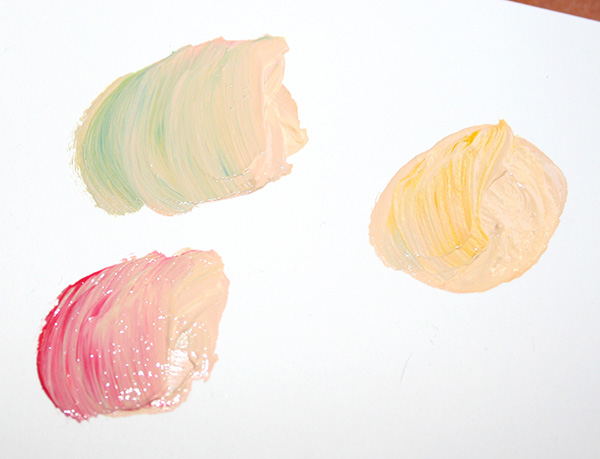 Any shadow or color which is reflected on the skin tone you’re painting should reflect the skin tone itself. This is to say, if you’re painting a blue shadow across the face of a character, the blue should be attained by mixing blue with your skin tone rather than just adding blue paint alone. This will create a much more natural, seamless look.
Any shadow or color which is reflected on the skin tone you’re painting should reflect the skin tone itself. This is to say, if you’re painting a blue shadow across the face of a character, the blue should be attained by mixing blue with your skin tone rather than just adding blue paint alone. This will create a much more natural, seamless look.
Always mix more paint than you think you need
Always, always mix more acrylic paint in a skin tone than you think you need. The reason is that skin tones are particularly tricky to re-mix with accuracy, and the viewer’s eye is drawn to areas of skin tone (faces, etc) so they are generally a prominent part of a piece of art. Even if you don’t think you need extra, make a little more and store it in an airtight container. If you need to make changes to your painting later, you’ll be thankful. Bonus tip: If you need to take a break from painting, cover your palette with plastic to help preserve the colors.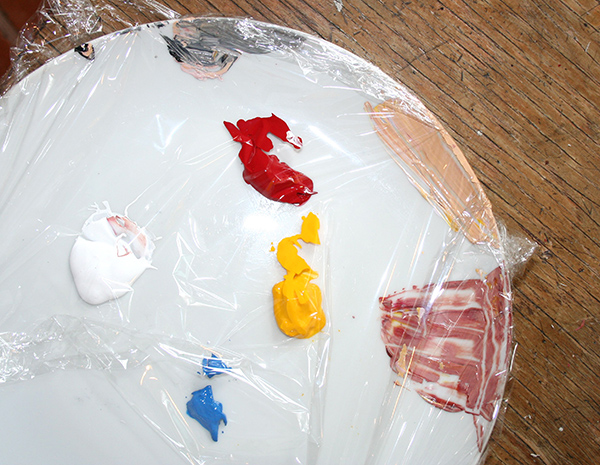
Re-mixing skin tones
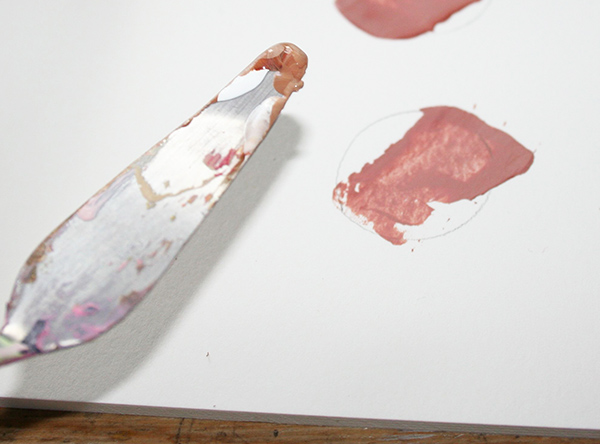 When trying to re-mix a particular skin tone, don’t rely on a visual match of the freshly mixed paint and the dried paint on your canvas. Instead, make a test swab of the newly mixed color, let it dry, and then compare how well you’ve matched the original tone. Acrylic paint dries darker than when applied, so waiting to see if the dried paint matches the area you’re trying to match is a truer test of the color. It takes a bit longer to do, but it’s worth the time.
When trying to re-mix a particular skin tone, don’t rely on a visual match of the freshly mixed paint and the dried paint on your canvas. Instead, make a test swab of the newly mixed color, let it dry, and then compare how well you’ve matched the original tone. Acrylic paint dries darker than when applied, so waiting to see if the dried paint matches the area you’re trying to match is a truer test of the color. It takes a bit longer to do, but it’s worth the time.
Keep records of your successful skin tones
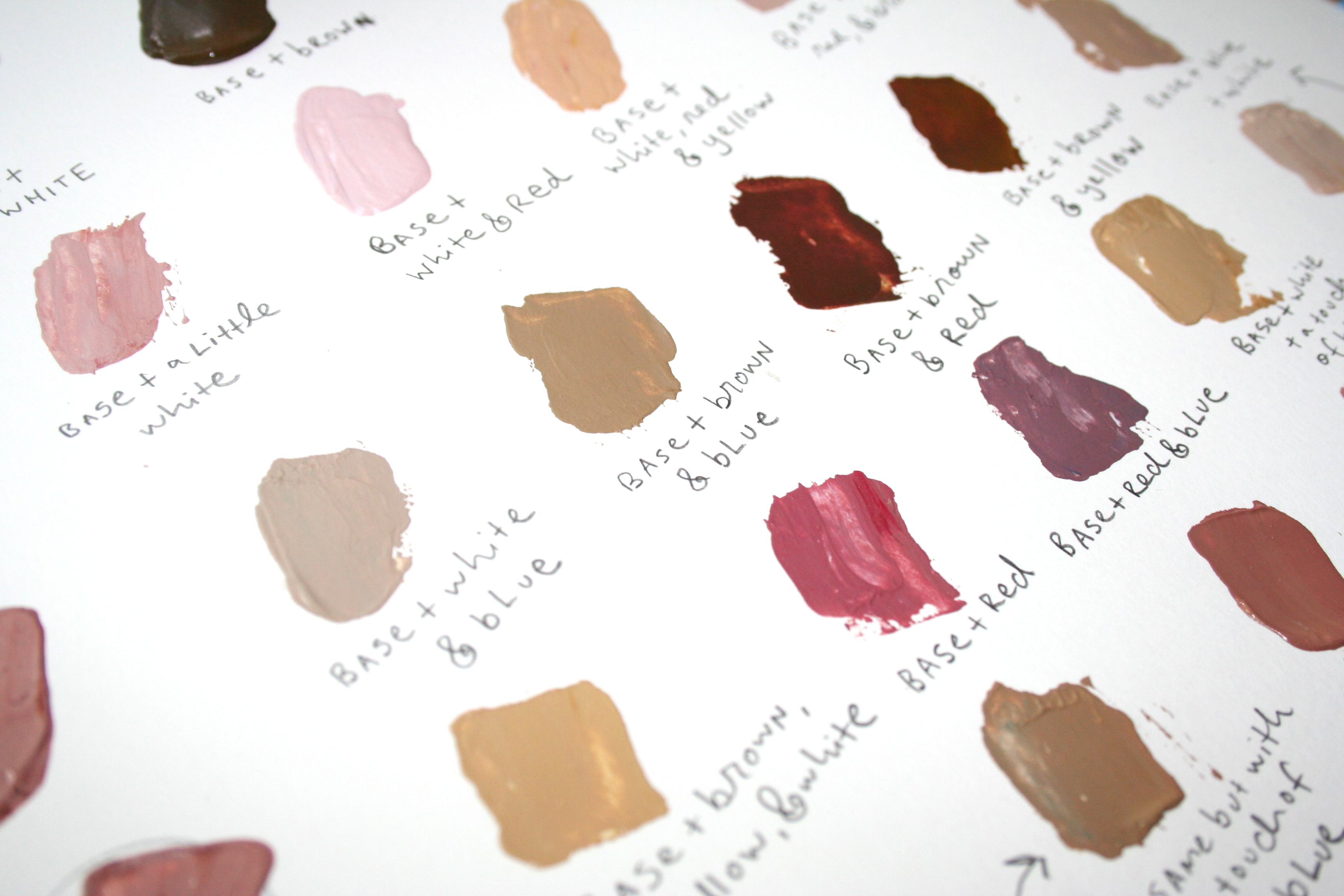 Keep a record of your favorite mixes! If you mix a fantastic skin tone, make a record of it! Keep notes on what colors you mixed together to make a particular skin tone.
Keep a record of your favorite mixes! If you mix a fantastic skin tone, make a record of it! Keep notes on what colors you mixed together to make a particular skin tone.

I have tried to download this "Free Guide" multiple times. Why is it not working?